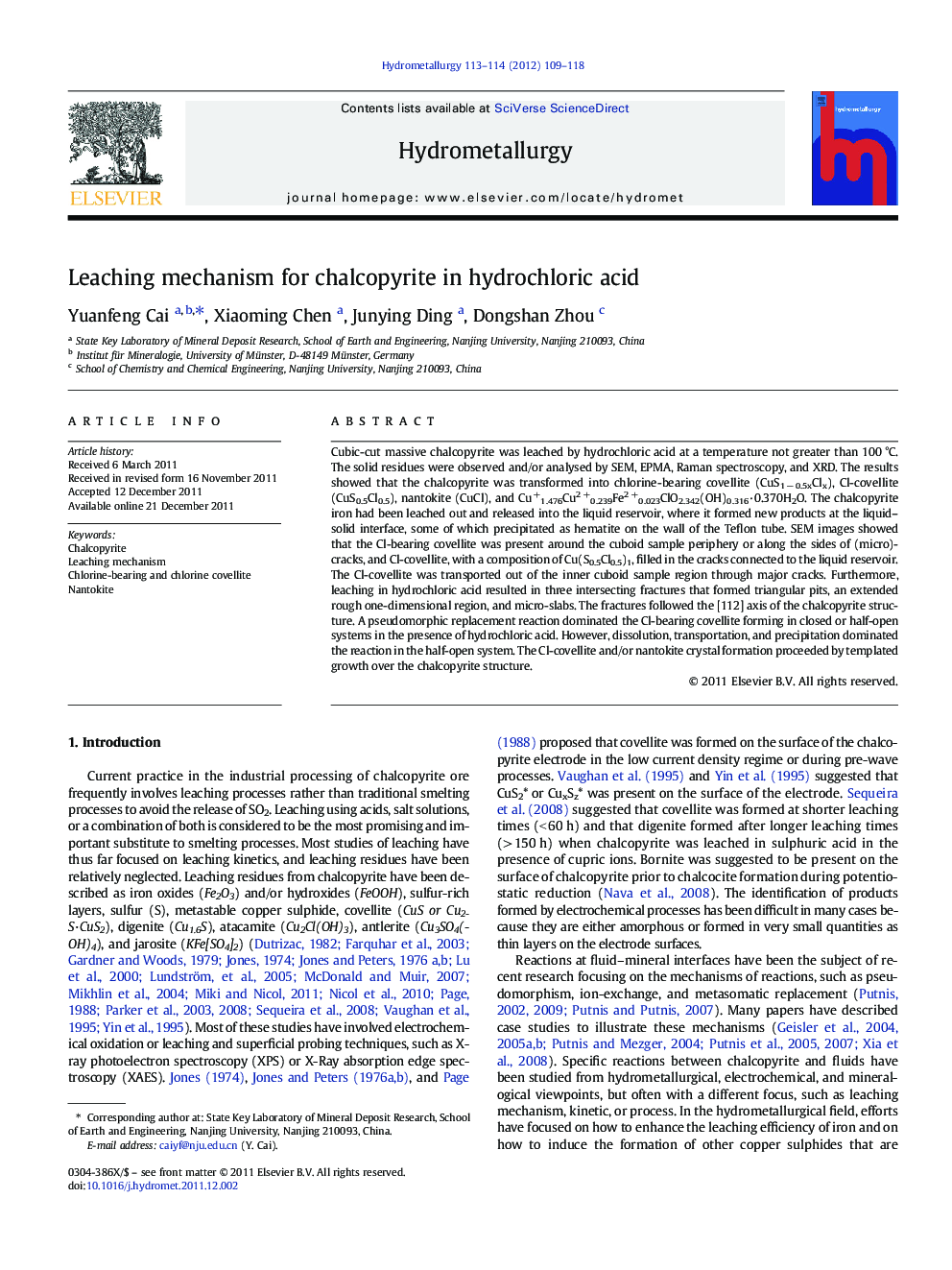| کد مقاله | کد نشریه | سال انتشار | مقاله انگلیسی | نسخه تمام متن |
|---|---|---|---|---|
| 212581 | 462056 | 2012 | 10 صفحه PDF | دانلود رایگان |

Cubic-cut massive chalcopyrite was leached by hydrochloric acid at a temperature not greater than 100 °C. The solid residues were observed and/or analysed by SEM, EPMA, Raman spectroscopy, and XRD. The results showed that the chalcopyrite was transformed into chlorine-bearing covellite (CuS1 − 0.5xClx), Cl-covellite (CuS0.5Cl0.5), nantokite (CuCl), and Cu+1.476Cu2 +0.239Fe2 +0.023ClO2.342(OH)0.316·0.370H2O. The chalcopyrite iron had been leached out and released into the liquid reservoir, where it formed new products at the liquid–solid interface, some of which precipitated as hematite on the wall of the Teflon tube. SEM images showed that the Cl-bearing covellite was present around the cuboid sample periphery or along the sides of (micro)-cracks, and Cl-covellite, with a composition of Cu(S0.5Cl0.5)1, filled in the cracks connected to the liquid reservoir. The Cl-covellite was transported out of the inner cuboid sample region through major cracks. Furthermore, leaching in hydrochloric acid resulted in three intersecting fractures that formed triangular pits, an extended rough one-dimensional region, and micro-slabs. The fractures followed the [112] axis of the chalcopyrite structure. A pseudomorphic replacement reaction dominated the Cl-bearing covellite forming in closed or half-open systems in the presence of hydrochloric acid. However, dissolution, transportation, and precipitation dominated the reaction in the half-open system. The Cl-covellite and/or nantokite crystal formation proceeded by templated growth over the chalcopyrite structure.
► We study different stages of replacement product of chalcopyrite.
► Species of product was constrained by the reach ability of Cl− and Cu+.
► We find the preferring leaching from specific 112 face of chalcopyrite.
► Cl-bearing covellite was surrounding the chalcopyrite particles.
► Cl-bearing covellite layer hindered the contact of acid and chalcopyrite.
Journal: Hydrometallurgy - Volumes 113–114, February 2012, Pages 109–118